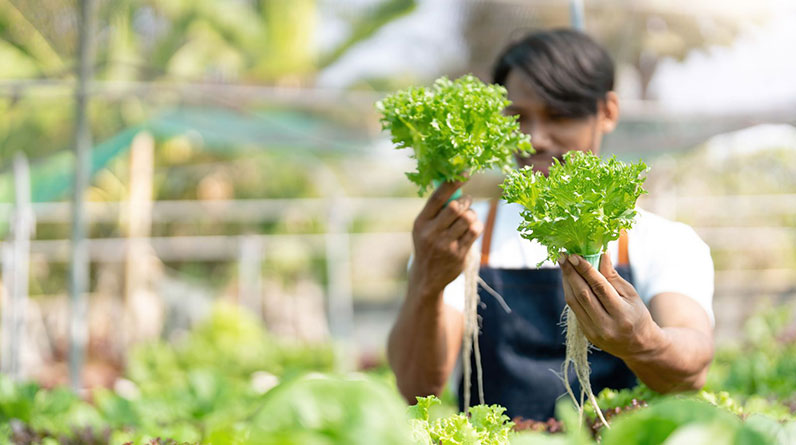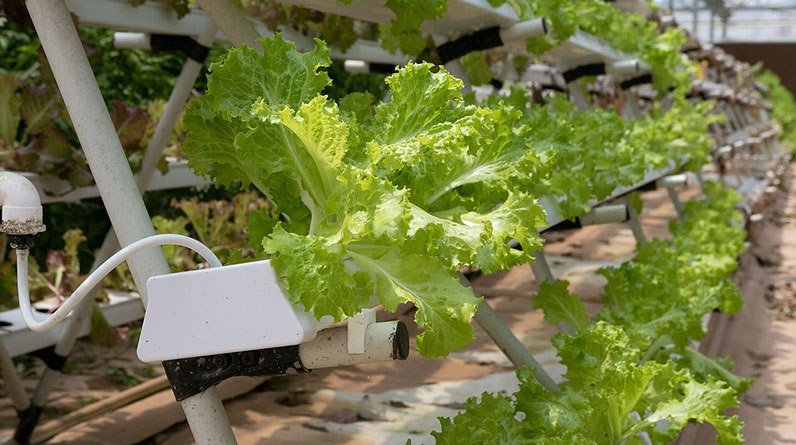
Hydroponic Mistakes to Avoid
While hydroponic gardening is an effective way to grow plants indoors, unfortunately, novice growers often make costly mistakes that could negatively affect their crops.
One of the most frequent mistakes gardeners make is selecting an inadequate nutrient solution for their plants. To ensure optimal success, check the pH level of your solution daily and adjust it according to what your plants require.
Not Considering the Nutrient Requirements of Plant
Hydroponic gardeners must consider the plant’s nutritional needs when creating nutrient solutions or using a hydroponic growing medium. This includes essential macronutrients like nitrogen, phosphorus, and potassium as well as micronutrients like magnesium, iron, copper, boron, zinc, manganese, and molybdenum.
A suitable hydroponic nutrient solution should contain these elements at a concentration of between 1.2 to 2.0 EC, free from salts such as sodium nitrate or sodium chloride.
Furthermore, the pH should remain neutral between 5.0 and 7.0 to facilitate root uptake and assimilation of all dissolved nutrients. It should be monitored daily to guarantee the nutrient solution’s pH stays within this recommended range.
The pH level of a nutrient solution is determined by its hydrogen ion concentration or acidity. On a scale from 0-to-14 points, with zero being the most acidic, 7 being neutral, and 14 being highly alkaline, pH values can range anywhere from 0 to 14.
Another essential aspect of plant nutrient uptake is electroconductivity (EC). A high EC indicates too many mineral salts in the solution for roots to absorb.
Hydroponic solutions should have an EC of between 1.2 to 2.0, depending on the manufacturer and your plants’ needs. This helps guarantee that nutrients reach the roots and promote proper nutrient absorption and growth.
Ignoring System Maintenance and Cleanliness
One of the most essential aspects of hydroponic gardening is maintaining your crops’ health. Hydroponic gardening systems require maintenance and cleanliness in order to ensure optimal health and productivity of the plants. Regular maintenance and cleaning of the system components and growing medium is essential.
The growing medium should be checked regularly for any signs of disease or damage and replaced as needed. Depending on the type of hydroponic system being used, the water and nutrient solution should be changed regularly and the system should be flushed with fresh water periodically.
Regular cleaning of the hydroponic system is also important. The growing medium, pipes, and other components should be scrubbed down with a mild detergent and rinsed thoroughly with water. Any debris or organic matter should be removed from the system to avoid clogging and water stagnation.
Additionally, the growing media should be replaced periodically to ensure proper drainage and aeration. Finally, all components should be inspected for signs of wear and tear and replaced as needed. Hydroponic systems should be kept clean and maintained regularly in order to ensure optimal growth and health of the plants.
Not Using the Right Lighting
Selecting the ideal lighting for hydroponic gardening is a crucial element in producing healthy crops. Different plants require different levels of illumination, so hydroponic gardeners should program their lights according to each species’ natural sunlight requirements.
For example, lettuces and other long-day plants require up to 18 hours of light each day in order to thrive. These crops should be grown under grow lights that replicate the red and blue light spectrums.
Short-day plants, such as strawberries and cauliflower, require less than 12 hours of light per day to thrive. These can be grown under various types of lights including LED and fluorescent bulbs.
However, the type of hydroponic lighting you select will depend on several factors including your budget and the size of your growing operation. For instance, a small garden may only require several fluorescent lights while an expansive commercial operation might need multiple HID lights for optimal performance.
To guarantee your plants receive enough light, use an electronic timer. These devices automatically turn lights on and off at predetermined intervals so that your hydroponic garden remains well-lit at all times. Furthermore, you can adjust the intensity of light according to the crop growth stage; this ensures a maximum harvest of nutritious vegetables and flowers.
LED lights or other low-power lighting solutions offer the most cost-effective yet effective lighting solution for crops. For maximum value for money, select a quality lamp with replaceable or recyclable bulbs that you can reuse after several years; this will save you money in replacement expenses while guaranteeing your lighting scheme always operates at peak performance.
Incorrect pH Levels
The pH level of your nutrient solution is critical for the growth and health of your plants. If it’s too high or low, it can cause issues. Your plants require a certain pH in order to absorb essential nutrients like nitrogen, phosphorus, calcium, magnesium, copper, and iron. Without an ideal pH balance, they won’t thrive properly.
Hydroponic growers must maintain a pH range between 5.5-6.5 for optimal plant growth. If the pH falls outside this range, your plants won’t be able to absorb enough nutrients and will become weak and eventually die.
Monitoring your pH levels regularly and making necessary adjustments is essential. A digital pH meter, available at various price points, can help you do this.
These meters feature a tip that dips into the nutrient solution until you receive a reading on your digital screen. It’s an extremely straightforward way to check pH levels and an invaluable addition to any gardener’s tool belt.
If your pH level is too high, a commercial “pH up” or “pH down” product can help remedy the situation. These solutions are safe to use with most hydroponic systems and will keep your pH within ideal limits for optimum growth.
It is essential to regularly measure and adjust your pH levels if you’re growing in hydroponics. The most accurate way to do this is with a digital pH meter; there are numerous brands available at any hydroponic retailer.
Not Managing Temperature and Humidity Levels
Maintaining temperature and humidity levels in hydroponic gardens is one of the most critical tasks. These variables affect plant growth and their capacity for absorption of nutrients, so too high or low can cause your crops stress, leading to lower yields as well as an increased likelihood of disease or pest infestation.
Temperatures can be controlled using various methods, such as fans, heat pumps, or even a wet pad. No matter which option you opt for, remember that plants are especially sensitive to changes in temperature, and each change will have an effect on your crop.
For optimal hydroponic vegetable results, keep the temperature between 70-80 degrees during the day and 60-70 degrees at night. This temperature range will give you optimal yields.
Humidity is another key element of hydroponic success, particularly during flowering. To monitor the relative humidity (RH) and moisture content of the air in your grow room, consider hanging a hygrometer or thermometer-hygrometer combo.
Temperature, water chemistry, and light – the three major elements in growing medium – are all well-known and easily achievable. Indeed, many modern systems offer advanced technology which allows you to control these variables for your crops’ benefit. To get the best results from each mix of growing medium, research and experiment to find what works best for each one of your crops.
Not Controlling Pests and Diseases
Hydroponics offer the advantage of growing plants without needing soil, but they’re not immune from pests and diseases. Waterborne illnesses and other problems can wreak havoc on your harvest if left unchecked.
The good news is that you can greatly reduce the likelihood of these problems by ensuring adequate air and water circulation in your system. Installing simple fans or air stones to help keep your crops healthy and contented.
Many of the common problems crop owners encounter in a hydroponic garden can be traced back to poor water quality, inadequate air circulation, and an absence of oxygen for roots. By connecting an expensive air pump to air stones placed directly into your solution, you can generate bubbles of oxygen which help protect against root rot from developing.
Bacteria are another critical issue that hydroponic growers must be mindful of. Generally, hydroponic water contains fewer bacteria than garden soil does, and using a specialized test kit can help identify any pathogens present in your water.
Aphids are one of the most frequent pests to cause harm to your hydroponic garden. These microscopic insects typically gather together in clusters and can be found around the base of your plants.
Once pests begin to invade your hydroponic garden, they can be quite challenging to eradicate. Not only do they spread disease but also deprive your plants of essential nutrients – leading to decreased yields.


